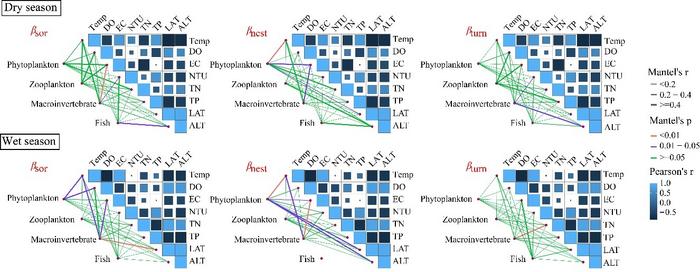
Newsroom
Unique Biodiversity Patterns in High-altitude Rivers on the Qinghai-Tibetan Plateau Revealed
A study published in Water Biology and Security has revealed the spatial and temporal patterns of biodiversity in four taxonomic groups – fish, macroinvertebrates, zooplankton and phytoplankton – along the Za'gya Zangbo River, which is at a height of over 4,500 m on the northern Qinghai-Tibetan Plateau.
“Alpine rivers are facing unprecedented threats from rapid warming, and their unique biodiversity is particularly vulnerable to climate change and disturbance,” notes first author Yintao Jia, Associate Professor at the Institute of Hydrobiology, Chinese Academy of Sciences. “However, our ability to predict the future distributions of cold-water specialist species and develop effective conservation strategies is hindered by the lack of comprehensive studies on the longitudinal distribution patterns of aquatic biota in these alpine ecosystems.”
To that end, the researchers observed four fish species, 45 macroinvertebrate taxa, 17 zooplankton taxa, and 56 phytoplankton taxa in the study area. “Notably, no consistent patterns in taxonomic richness were observed across taxa from upstream to estuary,” added Jia. “The relative importance of the turnover and nestedness components varied considerably across taxa and along spatial gradients.”
The diversity patterns of macroinvertebrates, zooplankton and phytoplankton were significantly correlated with several environmental factors, whereas only the beta diversity of fish was correlated with altitude. Stochastic processes dominated in shaping the macroinvertebrate communities, whereas deterministic processes dominated the assembly of the phytoplankton communities.
The findings highlight the importance of considering multiple biological groups in biomonitoring high-altitude rivers on the Qinghai-Tibetan Plateau. In particular, the upstream area and estuary of the Za'gya Zangbo River were found to harbor unique species, emphasizing the need for targeted conservation efforts in these areas.
"This study contributes to a deeper understanding of the longitudinal distribution patterns and their drivers in alpine aquatic ecosystems, providing valuable insights for developing effective conservation strategies for these fragile and vulnerable ecosystems," concludes Dr. Jia.

Mantel correlations of total beta diversity, nestedness, and turnover components with environmental distance (Credit: IHB)